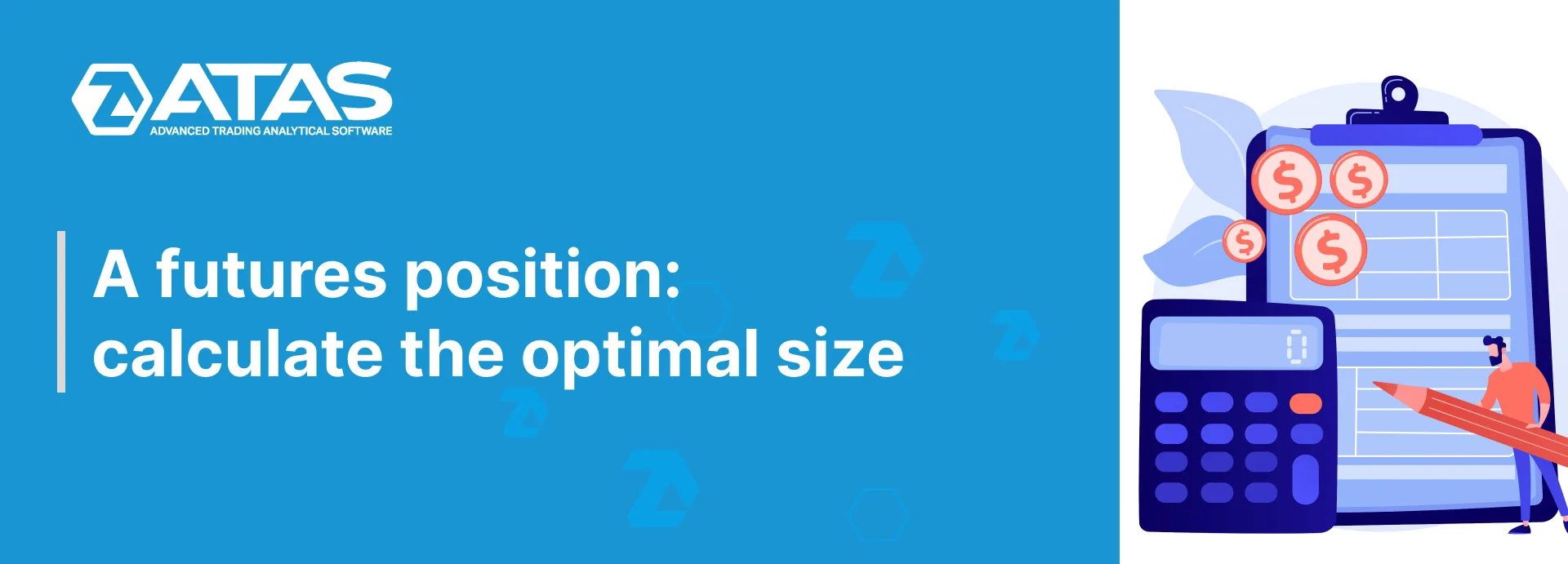How to calculate the size of a futures position
Perhaps the most important question a trader asks himself sounds like this: “What is acceptable risk for the next trade?”. The main factor which justifies risk increase is the position size or, in other words, a number of contracts acquired by a trader as a result of a trade execution. The trade size has several definitions depending on the type of a traded asset whether it be stock, bonds, derivative financial instruments or currencies.
In this article:
- How the futures position size influences the risk
- Calculation of the optimal number of contracts for a trade
How the futures position size influences the risk
The trade size in the exchange trading is a number of bought or sold futures contracts by a trader. As soon as the futures position increases by a certain number of contracts, the level of financial leverage increases too. A higher leverage level results in the increase of the required margin collateral and also increase of the whole trade’s risk.
Let’s assume, as an illustration of interconnection between the trade volume and leverage, that a trader trades intraday rallies of the American Stock Market. Let’s consider opening of the next trade by a trader in an effort to make a profit at a possible breakout of a significant price level:
- Trade: a buy of one S&P 500 mini-contract (ticker: ES) at an earlier set price;
- Trade size: 1 contract;
- Margin requirements: USD 500 is an intraday intrasession margin;
- Acceptable risk: USD 12.50 for one tick (tick is a minimum possible price movement).
Soon after opening a long position on one S&P 500 futures mini-contract, there were positive economic news which added optimism to the American stock market, in the result of which a trader decided to increase the number of open contracts:
- Trade: a buy of the second S&P 500 futures mini-contract (ticker: ES) at an earlier set price;
- Trade size: 2 contracts;
- Margin requirements: USD 1,000 is an intraday intrasession margin;
- Acceptable risk: USD 25.00 for one tick.
The margin requirements and risk increased twice since the number of contracts of a long position on S&P 500 index increased from 1 to 2 mini-contracts. Despite the fact that active trading of a bigger number of contracts may bring a higher profit, this also assumes a higher risk.
Calculation of an optimal size of a futures position
Sometimes the futures market behaviour is unpredictable. If, before entering the market, a trader doesn’t consider methods of managing a market trade and leverage, it is very probable that he would make mistakes that have a subjective (emotional) character.
Here are three components of the futures trading which are required for calculation of an optimal futures position:
- Size of the trading capital is one of the most important and determining factors of the size of a trade. The margin requirements on each trading instrument, set by the broker, should be observed by a trader in order to conduct active trading in the futures market. In the event a trader doesn’t observe these requirements, the broker forcibly closes positions opened by a trader. Further trading will be allowed only after a trader deposits additional collateral to his trading account.
- Degree of acceptable risk, which is often called a ‘pain threshold’. The degree of acceptable risk is a part of the trading capital which a trader can afford to lose in one trade. It is generally accepted that the level of acceptable risk is in the range of 1-3% of the balance of the trading capital.
- Stop loss is a pending entry order designed for automatic trade closing when the price achieves a certain price level with the aim to limit losses. The stop loss size is usually measured in ticks in the futures market.
You can identify the optimal trade size by means of a calculation of the part of the trading capital which a trader is ready to put at risk when opening a trade and the stop loss size:
Trading capital maximum risk ÷ Trade risk = Optimal position size.
Use the following scheme through the example of the Crude Oil (WTI) futures taking into account that the size of the trading capital is USD 10,000, acceptable risk is 3%, stop loss is 15 ticks and the cost of one tick is USD 10:
- Calculate the trading capital maximum risk size (trading capital size × acceptable risk 3%):
USD 10,000 × 0.03 = USD 300
- Calculate the trade risk (stop loss in ticks × cost of one tick):
15 × USD 10 for one tick = USD 150
- Receive the optimal position size (trading capital maximum risk ÷ trade risk):
USD 300 ÷ USD 150 = 2 contracts
Our calculations show that the optimal trader’s position with the trading capital of USD 10,000 is 2 oil futures contracts. Opening orders for more than 2 contracts testify to excessive use of leverage. At the same time, execution of a trade with less than 2 contracts means that a trader misses potential benefits and uses his trading capital inefficiently.
Remember that the futures trade size is 100% managed. Taking into account the sometimes unstable character of the futures market, leverage management is a must. Trading in the futures market with observation of the level of acceptable risk is an integral part of a fight with catastrophic losses and achievement of a long-term success in trading.



